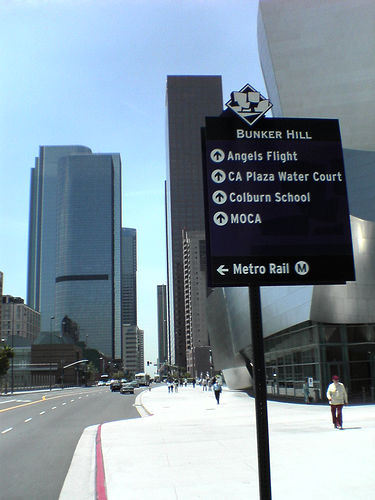How kids use landmarks to find their way

A new study shows that kids are better at wayfinding than we usually give them credit for, but they need landmarks to do it.
It’s tough to develop a mental map unless you can rely on landmarks and wayfinding tools to anchor your route. Adults increasingly rely on GPS, rendering the art of manual wayfinding less common than it was a decade ago. But children in the six- to ten-year-old age group might be old enough to be entrusted with navigating a neighborhood before they’re entrusted with a GPS-enabled device.
Researchers from the UK and France (Lingwood, et. al) set out to assess the development of wayfinding abilities in groups of children aged six, eight, and ten years old. The researchers wanted to establish the importance of landmarks in a child’s ability to navigate.
The children faced three virtual navigation scenarios: in one, there were no landmarks to assist in navigation. In the second, there were landmarks, but those landmarks weren’t emphasized or verbally labeled. The third scenario featured landmarks that were addressed and labeled, e.g. “This is fourth street.”
This study, recently published in the Journal of Environmental Psychology, differs from previous studies on children’s ability to wayfind because, in the past, it has been impossible to distinguish between wayfinding based on landmarks and wayfinding based on directions (i.e., take a left, then a right, then a left).
The findings, in short: Young children heavily rely on landmarks that are associated with a turn (e.g., turn right at the gray stone church). The six- and eight-year-olds in the study had a very difficult time navigating in the scenarios that did not feature landmarks, whereas the ten-year-olds experienced greater success in these scenarios. This confirmed the researchers’ hypothesis that the ability to wayfind without landmarks develops around the age of ten.
All of the children in the experiment experienced the greatest success in the third virtual scenario, which featured landmarks that researchers pointed out and verbally labeled in advance. Scenario three was the most successful across all tested age groups, suggesting that labeled landmarks may be a strong method of facilitating navigation for children of all ages.
Researchers were careful to note that they did not strongly associate labeled landmarks with specific directions. In other words, they didn’t say, “When you see the school marked Randolph Elementary, turn left.” They simply emphasized Randolph Elementary. This is useful, because it indicates that developing an awareness of landmarks in an area can help children develop mental maps that are not necessarily limited to one specific route. Labeled landmarks can help children understand how to get around an entire neighborhood, regardless of their destination.
Another recent study by several of the same authors found that children as young as five can be helped to navigate with the assistance of landmarks. Given that most children this age aren’t proficient readers, this underscores the importance of landmarks that have been previously emphasized and labeled. And for children who are proficient readers, physical labels — road signs, maps, billboards, signs in front of stores, etc. — can create a permanent anchoring for landmarks that may or may not have been previously pointed out.
Signs and landmarks matter. Signs and landmarks anchor routes, both facilitating navigation and confirming that navigators are on the right track. Signs and landmarks are immune to cell phone signal failures and data plan overages, and they’re also functional for people of all ages (especially if they include visual elements that transcend language barriers).










